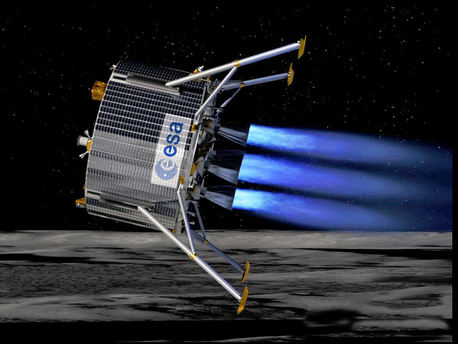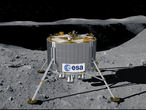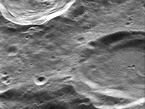Europe explores the Moon
From a design concept to hardware reality
 © ESA
|
The ESA's lunar lander mission aims to land in the mountainous and heavily cratered terrain of the lunar south pole, possibly in 2018. The region may be a prime location for future human explorers because it offers almost continuous sunlight for power and potential access to vital resources such as water-ice. New peopulsion technologies are one of the key areas of the ‘Phase-B1’ study, now going on under the leadership of EADS-Astrium Bremen and some of the key technologies will be developed and tested for the first time. The project will be presented to ESA’s Ministerial Council meeting in 2012 for full approval.
First, the most recent topographic data covering the Moon’s south pole will be analysed in detail to find the promising landing sites. The target area is poorly understood and only now are we are beginning to receive the information needed to consider landing and operating a mission there.
Then, the robotic lander will be designed down to the level of its various subsystems, such as propulsion and navigation.
The contract will culminate in a ‘Preliminary System Requirements Review’ in 2012, which will provide the basis for the final design of the mission and lander.
Source: ESA
Europe explores the Moon
From a design concept to hardware reality
 © ESA
|
The ESA's lunar lander mission aims to land in the mountainous and heavily cratered terrain of the lunar south pole, possibly in 2018. The region may be a prime location for future human explorers because it offers almost continuous sunlight for power and potential access to vital resources such as water-ice. New peopulsion technologies are one of the key areas of the ‘Phase-B1’ study, now going on under the leadership of EADS-Astrium Bremen and some of the key technologies will be developed and tested for the first time. The project will be presented to ESA’s Ministerial Council meeting in 2012 for full approval.
First, the most recent topographic data covering the Moon’s south pole will be analysed in detail to find the promising landing sites. The target area is poorly understood and only now are we are beginning to receive the information needed to consider landing and operating a mission there.
Then, the robotic lander will be designed down to the level of its various subsystems, such as propulsion and navigation.
The contract will culminate in a ‘Preliminary System Requirements Review’ in 2012, which will provide the basis for the final design of the mission and lander.
Source: ESA








